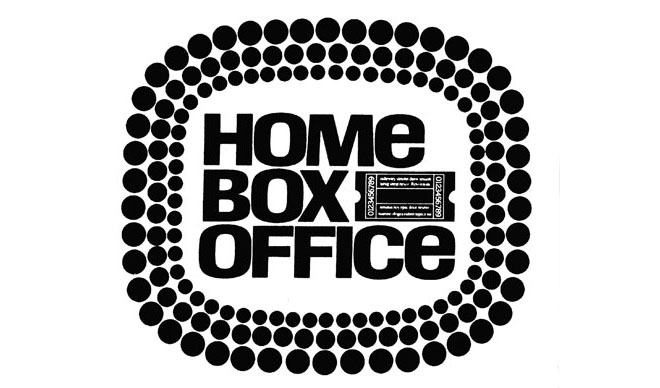This very question came across my desk a couple weeks ago. It’s not something most people would ask, at least not in those words. But at its heart, it’s something we’ve all wondered. So it seemed like a good choice for an article for this blog. Ready? Let’s go.
What is conditional access?
Once upon a time, every TV broadcast of every kind was completely open to anyone watching. The law was pretty clear in the 20th century: if you broadcast on the public airwaves, then anyone with a receiver had to be able to see and hear what you’re broadcasting. That doctrine took us all the way to the 1970s, to the dawn of the dominance of pay television.

When HBO launched in 1972, it created a new model. Early cable TV systems were mostly concerned with carrying local channels. Now, here was a channel that everyone in the country could get. And, it was a channel that everyone had to pay for. So, this required some way to make sure that people wouldn’t get HBO for free.
This was generally done by placing a filter at the entry to the home which removed some key information that let the channel sync. Why didn’t people in the 1980s know to remove the filter? Some did, but most people thought cable TV was way too complicated to mess with. Those were different times.
The 1990s and the rise of conditional access
The 1990s were a time of incredible technological advancement. Computer chips became inexpensive and they were suddenly everywhere. It was the time that brought us the World Wide Web, and it was also the time that brought us our modern conception of pay television.
Satellite TV companies were the first to advocate for the technology that makes pay-TV possible. As the laws were written in the 1980s, it was illegal for satellite broadcasts to be encrypted. This obviously would have made companies like DIRECTV or DISH impossible. New laws were written that let any pay television company encrypt their signals, charge for hardware to decrypt, and charge for service. Essentially this is what modern pay television is today. It’s important to note that in the US, different companies were allowed to create their own systems that weren’t compatible with other systems. This was not true in other countries, and that’s an important part of the story.
Cable companies, most of whom were struggling to add channels due to capacity issues on copper wires, also rushed to create their own conditional access systems. These were the “cable boxes” you’re familiar with from those days. However, the FCC didn’t terribly like the idea of all pay television being encrypted. That wasn’t their goal when creating the laws around conditional access. So they tried to fix things in 1996.
CableCARD and the Telecommunications Act of 1996

Every few decades, the entire world of telecommunications changes so much that there needs to be a whole new law describing this. One such law established television in the first place. The 1996 version of this law was based on things like digital cell phones and internet devices, but it also created a new way for cable companies to build compatible equipment. Called CableCARD, it was a credit-card-sized module designed to let any TV or decoder box work with any cable system. Satellite was exempt from the CableCARD requirement. More importantly, Cable companies weren’t required to offer CableCARD in every device and neither were TV manufacturers. This meant that practically no devices supported CableCARD.
CableCARD in the US was, to put it mildly, a flop. Most people never even knew it existed, or that they could avoid renting a cable box if they had the right equipment. Making matters worse was the move in the 2010s to IP-based television delivery. Cable companies more or less stopped offering traditional pay-TV, simply delivering video using internet protocols. That sort of video delivery is covered by a different set of laws.
In 2020, the FCC announced that they wouldn’t even be tracking CableCARD adoption, essentially putting the last nail in that coffin.
A different world: CI+ cards

Television followed a very different path in other parts of the world. In Europe, for example, traditional television went digital much earlier and there have already been several generations of technology. The same tech underlies satellite, cable, and traditional TV broadcasting, and in most cases, all forms of TV are supported by taxes paid straight to the government. Pay television as we know it came much later to Europe and never had the same popularity.
In order to make sure that all broadcasts could be received on all equipment, the DVB-CI standard, also known as CI or CI+ depending on the generation, was created. DVB-CI provides a Common Interface which allowed signals to be properly decrypted. Encryption is still needed because if you pay your taxes in France, you don’t have the right to get channels from Spain for example. In a typical setup, you would buy your cable box at a store, and be provided with a CI card from the government assuming you paid your taxes. In later generations, CI compatibility can be provided through software, but the concept is the same.
So, getting to the question
There are no CI systems usable in the US. The closest that we came to that was CableCARD, which isn’t compatible with satellite and is basically dead anyway. There’s no universal technology for getting cable and satellite content and there isn’t likely to be. The closest we have is something like a streaming box which has the capability to run all the live TV apps.
Most folks are just fine with this, honestly. But it’s created some sadness in enthusiasts for years. DIRECTV and DISH have built very good technology over the years, but local cable companies haven’t always kept up. Those who wanted to use TiVo or other independent DVRs haven’t always been able to get the CableCARDs they needed to do this. Today, it’s nearly impossible to use a non-provider-specific cable or satellite box in the US. Because most cable companies have moved to IP delivery, it’s not going to happen in the future unless there’s a new law. And without getting too political, that’s not likely to happen.
What can you do if you want a custom home theater or TV distribution system?
Just because you can’t use CI doesn’t mean you don’t have options. Home users of DIRECTV or DISH have the ability to use small client boxes or even use their provider apps on smart TVs. For business customers, compact headends like COM3000 and Smartbox use encryption technology that can be built into TVs. The TVs aren’t really any more expensive than other high-quality TVs but generally can’t be bought in big box stores.
If you’re ready to hear more, call the experts at Signal Connect! We’re experts in solving television distribution problems. We’re here to make your dreams a reality. Call 888-233-7563 during East Coast business hours. Our team will explain all your options. Call, or if it’s after hours, fill out the form below.





